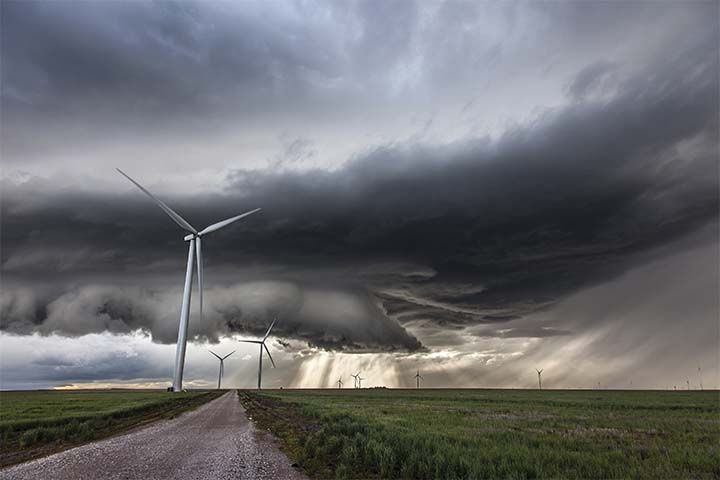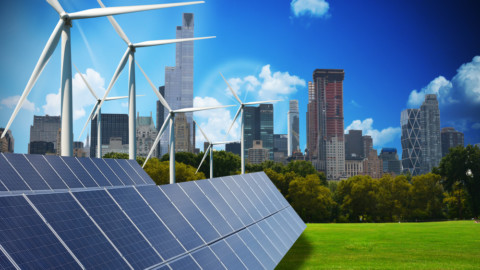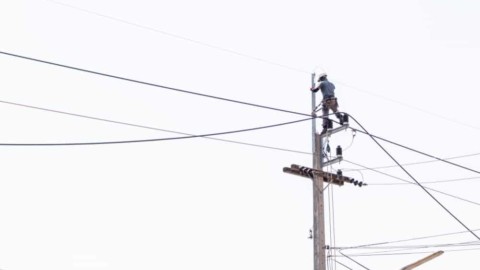by Imogen Hartmann, Associate Editor, Energy magazine
Reliability stands as one of the three pillars of the energy industry’s most coveted objectives, along with affordability and sustainability. With the phrase “keeping the lights on” so often used by industry leaders and policy makers, it’s no wonder that when the lights truly went out in South Australia in 2016 it caused a nation-wide stir. As the state’s 1.7 million residents were plunged into darkness following a massive storm, one question was on everyone’s minds: what went wrong? In the first part of this series examining the South Australian blackout, we use the benefit of five years’ worth of hindsight to examine the events that occurred in the leadup to and during the crisis.
During the period 28 to 30 September 2016, a storm dubbed as a “once-in-50-year” weather event tore through South Australia. The intense low-pressure system saw winds of up to 140km/h hit Adelaide, eliciting an unprecedented warning from police for workers to head home early and stay home to preemptively alleviate pressure for emergency services.
Trees were brought down in some areas, causing major damage to infrastructure and the heavy rain resulted in widespread flooding, from the Patawalonga River in Adelaide, through to the Barossa and Clare Valleys.
Along with destructive winds, the super cell storms brought with them twin tornadoes that decimated northern parts of the state. 22 transmission towers that carried electricity generated near Port Augusta to the rest of the state were ripped out of the ground, and three major transmission lines were brought down.
Energy infrastructure also copped a severe amount of damage from 80,000 lightning strikes that hit the state over a short period. As South Australia was plunged into darkness by a state-wide blackout, then Premier, Jay Weatherill, described what had happened as “catastrophic”.
The event has since been described as a black swan – an unpredictable, rare event that falls outside of what is normally expected of a situation, often with severe consequences. The defining characteristic of a black swan event is a surrounding narrative that it was obvious or avoidable in hindsight.
Protection systems triggered
Two tornadoes with wind speeds in the range of 190-260km/h resulted in a single circuit 275kV transmission line and a double circuit 275kV transmission line, some 170km apart, simultaneously sustaining serious damage.
The transmission lines tripped as a result, with a sequence of faults in quick succession causing six voltage dips on the South Australian grid over a two-minute period at around 4.16pm on Wednesday 28 September.
Concurrent with a growing number of faults on the transmission network, nine wind farms located in the state’s mid-north showed a sustained reduction in power – a protection feature activation.
Protection settings in eight of these wind farms enabled them the capability to withstand a pre-set number of voltage dips within a two-minute period. As this protection feature was activated, the wind farms sustained a hefty generation reduction – 456MW – over a period of less than seven seconds.
Just as the wind farms have inbuilt protection systems, so too do the poles and wires. Generators create power, but they also affect the voltage and the frequency of the electricity network – something that requires careful maintenance in order to protect everything that’s connected to it.
When the 22 high-voltage power pylons went down, it triggered a series of automatic safety switches designed to protect the greater South Australian power network – and the rest of the National Electricity Market (NEM).
After the wind farm output dropped off, a significant increase in imported power flowing through the Heywood Interconnector then occurred. No more than 700 milliseconds after the last of the wind farms’ output dropped off, the level of flow reached on the Victoria-SA Heywood Interconnector activated a specialised protection scheme – tripping the interconnector offline.
Mr Weatherill told reporters at the time, “What happens is the system protects itself by tripping all the generators in the system and also by severing the interconnector with Victoria.” South Australia’s power system had effectively become “islanded” from the rest of the NEM.
According to an analysis by the Australian Energy Market Operator ( AEMO), Black System South Australia 28 September 2016, there was no substantial load shedding after the system separation, resulting in remaining generation that was significantly lesser than the connected load, thereby rendering it incapable of maintaining the islanded system frequency. The result was a total loss of power supply to the South Australia region (known as a Black System) at 4.18pm.
Repowering the system
Mr Weatherill said that following the cut off from the interconnector, there was a series of back-up generators which gradually restored power to the system. “Once the system is balanced then power is restored,” Mr Weatherill said.
AEMO reports that, following an assessment process conducted in partnership with South Australian transmission company, ElectraNet, to determine which sections of the network were safe to energise, a system restart plan commenced at 4.30pm.
This plan included restart capability from one of two contracted South Australian system restart ancillary service (SRAS) generators, and supply from Victoria via the Heywood Interconnector.
ElectraNet worked on the damaged transmission lines that posed a potential threat to public safety. By 7pm on 28 September, the first customers began to see power being restored, and by 8.30pm the state saw restoration to 40 per cent of load capable of being restored.
Around midnight, 80 to 90 per cent had been restored, with the remaining load being gradually restored up until 11 October 2016, involving a process of bypassing fallen transmission lines.
Minutes after the initial event, AEMO made a declaration of NEM suspension within the South Australian region. This suspension wasn’t immediately lifted after the Black System event was over as there still remained uncertainties over power system operations.
It wasn’t until twelve days later that AEMO lifted the suspension upon advice from the South Australian Government that its direction for suspension of the market had been revoked.
SA’s energy mix under fire
In the aftermath of the 2016 blackout, with several smaller-scale blackouts recorded across the state in the years prior, industry and governments quickly began asking the questions: could we have seen this coming? Could this have been avoided?
A lot of this speculation was prompted by South Australia’s somewhat controversial energy mix. At the time of the blackout, South Australia’s energy mix consisted of wind, solar and gas.
What was unique about the state’s energy supply at this time was that Alinta’s Northern power station at Port Augusta closed in May that year, cutting coal out of South Australia’s electricity production equation for the first time.
This was considered by many as a bold strategy, and aligned with the State Government’s pursuit of a power system consisting of plenty of renewables. Former Chief Executive of the Australian Energy Council, Matthew Warren, warned at the time of the power station closure’s potential impact on the state’s back-up energy availability during peak demand times.
He also said this would place a greater reliance on the state’s renewable energy generation, and the Victorian interconnector for base-load power.
Mr Warren described South Australia’s energy position as “uncharted waters”, and asserted that there was a greater level of risk than ever before of blackouts.
Deputy Prime Minister, Barnaby Joyce, said on Sydney radio station 2GB shortly after the event, “Obviously we know that South Australia has had a strong desire to become basically all renewable energy and the question has to be asked: does this make them more vulnerable to an issue such as what happened last night?”
Mr Joyce criticised that the state was in a more vulnerable energy position, which had made a total blackout more likely. Then South Australian Senator, Nick Xenophon, told reporters that the state relied too heavily on baseload renewables rather than baseload power such as gas, before calling for an independent inquiry into the outage.
Then Federal Energy Minister, Josh Frydenberg, said on a 7.30 report, “We have a COAG energy council which I chair and I’m proposing to bring those members together as soon as possible to get to the bottom of exactly what has occurred and what needs to be done to ensure it doesn’t happen again.”
Renewables to blame?
Mr Weatherill rejected the notion that the state’s high use of wind power or the shutting of the coal-fired stations had any impact on the severity of the power failure.
Instead, he maintained that the system had reacted as it was designed to. “This would happen to any system anywhere in the world if they had a similar circumstance,” Mr Weatherill said. Some energy experts backed this sentiment, stating that even if coal-fired stations had still been operating, they too would have dropped offline and succumbed to the cascading failure that tripped the generations.
Dylan McConnell, Research Fellow – Energy Systems, Climate & Energy College and Energy Transition Hub, said, “Having those thermal generators there wouldn’t have helped at all.” Roger Dargaville, Deputy Director at Monash Energy Institute, said, “These kinds of failures in the NEM (which covers the five eastern states) are extremely rare.
The NEM experiences a range of extreme weather on a regular occurrence and a vast majority of the time copes well. “The system contains multiple levels of redundancy and safety mechanisms, however it is impractical if not impossible to build any complex system that is completely 100 per cent reliable.
“Providing additional redundancy to insure against such events would be extremely costly, and would still not completely guarantee against further extreme events.”
The Black Swan conundrum
Retrospective analysis is the crux of the Black Swan conundrum – with the knowledge of hindsight, it’s easy to say that the fallout from an event, unprecedented or not, could have been avoided with the right fail-safes in place. But, as Mr Dargaville pointed out, it can be costly and impractical to try to predict and mitigate absolutely anything that might befall our power system.
Mr McConnell explained this by saying that if South Australia could have planned for this exact weather event and subsequent power impacts, just to be hit with something different, like an earthquake.
In this case, costly protections might have been put in place just to suffer the same system failure caused by another unexpected event. Not only would a system capable of dealing with any risk scenario be very expensive, it has been suggested that black swan events can wreak havoc on an economy by negatively impacting markets and investments.
Despite the difficulty of predicting such events, the industry and public have been keen nevertheless to gain some more understanding from the South Australian blackouts to strengthen the system of the NEM, and prevent it from happening again.
What would follow would be a series of reports, reviews and investigations into the incident, as well as energy market rule changes to mitigate risks, and industry bodies and governments keeping a watchful eye on similar Black Swan events as they unfolded.
Stay tuned for Part 2 of this series in our November 2021 issue of Energy magazine, where we’ll take a deeper dive into the industry’s response to the crisis, report findings into the role renewables played, and examples of other black system events across the world.



















